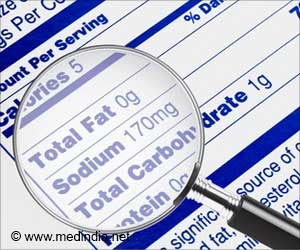Taking a combination of vitamins B6 and B12 and folic acid appears to decrease the risk of age-related macular degeneration in women.
Taking a combination of vitamins B6 and B12 and folic acid appears to decrease the risk of age-related macular degeneration in women, according to a report in the February 23 issue of Archives of Internal Medicine, one of the JAMA/Archives journals.
Age-related macular degeneration (AMD) is a leading cause of vision loss in older Americans, according to background information in the article. Treatment options exist for those with severe cases of the disease, but the only known prevention method is to avoid smoking. Recent studies have drawn a connection between AMD and blood levels of homocysteine, an amino acid. High levels of homocysteine are associated with dysfunction of the blood vessel lining, whereas treatment with vitamin B6, vitamin B12 and folic acid appears to reduce homocysteine levels and may reverse this blood vessel dysfunction.William G. Christen, Sc.D., of Brigham and Women's Hospital and Harvard Medical School, Boston, and colleagues conducted a randomized, double-blind clinical trial involving 5,442 women age 40 and older who already had heart disease or at least three risk factors. Of these, 5,205 did not have AMD at the beginning of the study. In April 1998, these women were randomly assigned to take a placebo or a combination of folic acid (2.5 milligrams per day), pyridoxine hydrochloride (vitamin B6, 50 milligrams per day) and cyanocobalamin (vitamin B12, 1 milligram per day). Participants continued the therapy through July 2005 and were tracked for the development of AMD through November 2005.
Over an average of 7.3 years of treatment and follow-up, 137 new cases of AMD were documented, including 70 cases that were visually significant (resulting in a visual acuity of 20/30 or worse). Of these, 55 AMD cases, 26 visually significant, occurred in the 2,607 women in the active treatment group, whereas 82 of the 2,598 women in the placebo group developed AMD, 44 cases of which were visually significant. Women taking the supplements had a 34 percent lower risk of any AMD and a 41 percent lower risk of visually significant AMD. "The beneficial effect of treatment began to emerge at approximately two years of follow-up and persisted throughout the trial," the authors write.
"The trial findings reported herein are the strongest evidence to date in support of a possible beneficial effect of folic acid and B vitamin supplements in AMD prevention," the authors write. Because they apply to the early stages of disease development, they appear to represent the first identified way—other than not smoking—to reduce the risk of AMD in individuals at an average risk. "From a public health perspective, this is particularly important because persons with early AMD are at increased risk of developing advanced AMD, the leading cause of severe, irreversible vision loss in older Americans."
Beyond lowering homocysteine levels, potential mechanisms for the effectiveness of B vitamins and folic acid in preventing AMD include antioxidant effects and improved function of blood vessels in the eye, they note.
Source-Eurekalert
SRM













